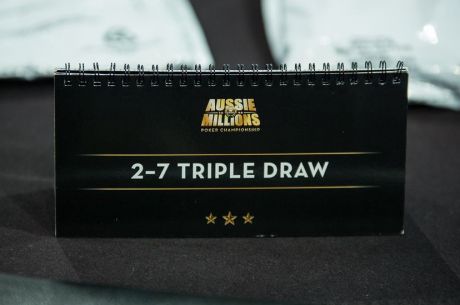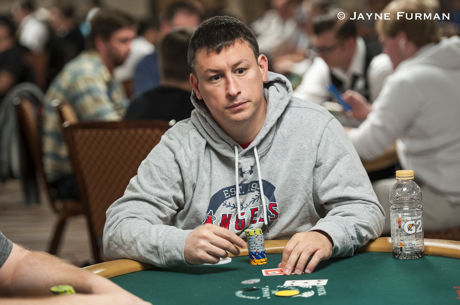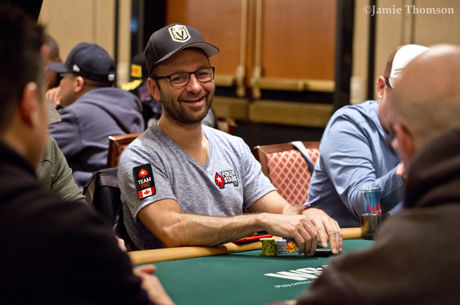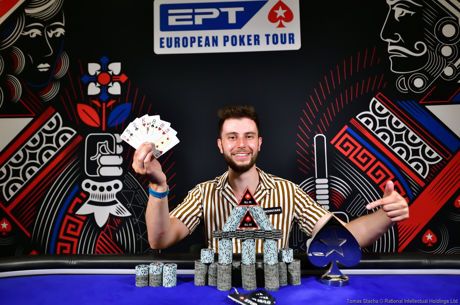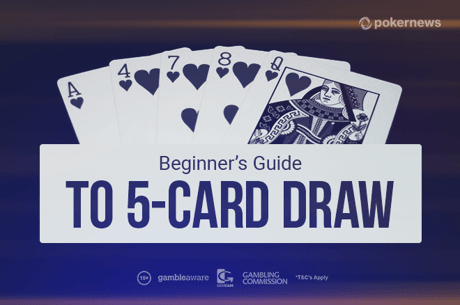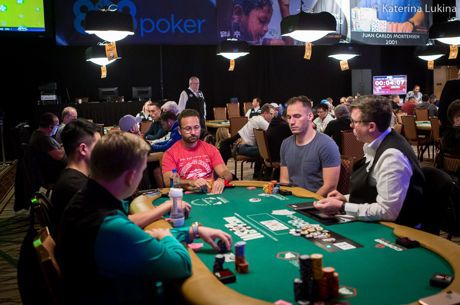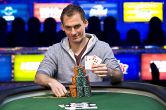2-7 Triple Draw: Adam Owen Reviews Some Hands

In my ongoing series here, I mostly review no-limit hold'em hands played by myself or those whom I've observed in my capacity working as a poker tournament reporter. When I do get the chance to step away and play, my favorite game is pot-limit Omaha, but the majority of my action these days still comes in no-limit, simply because that's where most of the action is, generally speaking.
Before Black Friday though, I had grown bored of the no-limit cash grind. With the help of a friend, I branched out into 8-game and fell in love with the mix. I had experience playing all of the games save for one �� 2-7 triple draw. My friend's crash course to me was basically "stick to two-card or one-card draws with a deuce... good luck."
I learned the game as well as I could through experience, and it definitely became one of the games I most enjoyed in the mix. The concept that you could represent anything was pretty mind-blowing to me, making the game completely different from other forms of poker that had some cards up.
However, when Black Friday hit and my easy access to 8-game tables went away, so, too, did my reps with "deuce," as players frequently call it. I got to dabble in the occasional (and sometimes slightly drunken) mixed game, but over the past few years, most of my time spent thinking about triple draw came during the few chances I had to cover it during the World Series of Poker.
Last November when I finished up work early one day at PokerStars Festival New Jersey, I had the rare opportunity to enjoy a bit of nostalgia and play some 8-game, as the late tournament that day was a $340 buy-in 8-game mixed event. I hopped in and, lo and behold, found myself at the final table three-handed with Barry Greenstein and old-school East Coast stud legend Chris Reslock.
As it happened, some triple draw hands played a key role in both getting me there and in the eventual result. When PokerStars Championship Panama earlier this year, I ran a few of the more crucial 2-7 hands I played by Adam Owen. The British pro has built a successful career both live and online on the strength of his versatility, playing all different games en route to earning $1.2 million in live cashes and another $1.2 million online, mostly as "adamyid" on PokerStars.
In this two-part interview series, Owen will critique some the hands of "deuce" I played and offer some thoughts on 2-7 triple draw in general.
PokerNews: Can you give a little bit of background with regard to your experience playing deuce?
Adam Owen: I started playing 2-7 single draw [no-limit]. It's probably my favorite and one of my best games. Triple draw is obviously more popular, so I eventually found that. I'm not as good at triple draw, but I still think I'm holding my own in a lot of line-ups. I mainly play $5/$10 and $10/$20 online. If there are bigger games, I've played up to $100/$200 before.
[I've] played both the $1,500 and the $10K at the World Series.... It's a great game. Whenever I get the chance to play, it's always fun.
Okay, let's start with a 2-7 hand I played against Barry Greenstein. Barry raised on the button, and I had 9x8x4x3xXx in the big blind. I can't remember if I had a pair or a big card. I did call. Is that an okay hand to defend in the big blind when someone raises the button three-handed?
What were stack sizes like?
I was the chip leader �� I think I had about 15 bets. Barry was short with just around five or six bets.
If he was really short, I'd probably try to three-bet and play it as an all in if I was in the small blind. In the big blind, yes, that's a very easy call.
Okay, so I call and I draw a six right away, making me a nine-eight. He draws three, so I come out betting. That's standard, right?
I would be drawing two, actually. Generally, you want to be drawing smoother out of position. Eight-four-three itself isn't really that smooth. It makes some good eights. If we're drawing one, I like to three-bet my whole drawing one range. I think it plays better as a flat and drawing two.
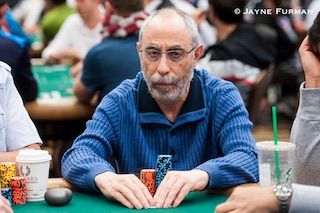
Drawing to the nine out of position and betting when Barry's drawing three... I don't hate your line, but I think in general you should be calling and drawing two there. But, yes, I would bet there [if I drew one].
I see. Well, in the actual hand, Barry did call my bet. I patted and Barry drew two. I bet and he called again, drawing one on the final pull. I felt I still had a pretty bad hand to bet for value. He only had a couple of bets left. Would you bet the river there?
I would check. I think when you value bet, you're repping a snow line if you're hoping to get called by worse. And if you're trying to rep a snow, you'd likely have three-bet pre to give yourself another chance to get a fold.
Generally, [with] nines and tens out of position on the river, and jacks if you get that far, you're going to be checking. Especially when you're pat, unless you have a reputation for snowing or you've shown down some bluffs. You should be checking.
Are we checking planning to call or fold if he bets? It's really tough, right?
That's the classic deuce spot. Checking a nine on the river, and they think for two seconds and bet [laughs].
Factors that influence my decision would be, have we seen pairs? What blockers do we have? If Barry hits his draw, he should always be beating us, and he should never be value betting worse. He might value bet a nine-five and maybe some nine-sevens. Generally, his values are going to be eights or better.
Luckily for me, I was spared any kind of torturous decision on the river, as Greenstein did fold. I still have no idea what I would have done had he bet. I suspect it would have been a spot to try to save a bet and fold, as it seems unlikely he'd try to bluff since I was pat.
Next week, we'll go over the second part of my interview with Owen. He'll analyze a follow-up hand from the final table and we'll get into a discussion of snowing, which I attempted to pull off in a multi-way pot.

